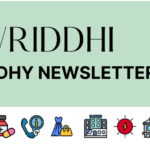
The United States is swiftly approaching a critical point known as the “X-date,” where the government may no longer be able to meet its financial obligations. Recent assessments by the Congressional Budget Office and the U.S. Department of the Treasury have emphasized the potential consequences of reaching the debt ceiling. Historical evidence indicates that even nearing this threshold could cause significant disruptions in financial markets, negatively impacting households and businesses. Present real-time data reveals that market participants are already factoring in the risk of political brinkmanship associated with a potential federal government default, leading to increased risk premiums.
A breach of the U.S. debt ceiling would have severe ramifications for the national economy. Analysis conducted by the Council of Economic Advisers (CEA) and independent researchers highlights the detrimental effects of a U.S. government default on its obligations, whether to creditors, contractors, or citizens. Such a default would rapidly reverse the current positive trajectory of the economy, and the extent of the losses incurred would depend on the duration of the breach. If the default persisted over an extended period, the economy would likely suffer severe damage, causing job growth to shift from its current robust pace to millions of job losses.

The consequences of a government debt default could undo the remarkable economic progress achieved since the current administration took office. This includes an impressively low unemployment rate nearing a 50-year low, the extraordinary creation of 12.6 million jobs, and robust consumer spending that has consistently propelled reliable and solid economic growth. These achievements have been fueled by strong job market conditions and healthy household financial situations.
In a breach-induced recession resulting from default, the government’s ability to implement counter-cyclical measures would be limited, leaving few policy options to mitigate the impact on households and businesses. Furthermore, the ability of individuals and businesses, particularly small enterprises, to borrow from the private sector to alleviate the economic strain would also be hindered. The risks associated with default would trigger a surge in interest rates, affecting various financial instruments used by households and businesses, such as Treasury bonds, mortgages, and credit cards, exacerbating the economic challenges individuals and enterprises face.
Impending Debt Ceiling: Potential Consequences and Impacts
Unprecedented Risk: Impending Debt Ceiling Breach and its Catastrophic Economic Ramifications
The looming threat of breaching the debt ceiling has no historical precedent of being surpassed without Congress raising or suspending the federal debt limit. Nonetheless, economists widely agree that such an event would lead to an entirely avoidable economic catastrophe.
Notably, analysts Wendy Edelberg and Louise Sheiner from the Brookings Institution have emphasized the escalating likelihood of significant disruptions in financial markets due to worsening expectations of a possible default. These disruptions would likely coincide with declines in equity prices, a loss of confidence among consumers and businesses, and restricted access to private credit markets.
The mounting market stress related to debt ceiling tensions has already begun to manifest. Yields on Treasury bills with maturity dates around the anticipated X-date have experienced substantial increases, directly raising borrowing costs for the government and consequently burdening taxpayers. Figure 1 illustrates this trend, depicting a nearly 1-percentage point rise, equivalent to approximately a 20% increase, in yields on short-duration Treasury bills since mid-April.

Unprecedented Concerns: Soaring Costs of Insuring U.S. Debt Amid Default Fears
The escalating apprehensions surrounding a potential U.S. default have resulted in a substantial surge in the cost of insuring U.S. debt, reaching an unprecedented all-time high. This surge is indicative of heightened worries within the market.
Credit default swap (CDS) spreads, which represent the insurance premiums required to safeguard U.S. debt, have experienced a rapid and dramatic increase since April. Figure 2 provides a visual representation of this trend, illustrating the significant rise in CDS spreads.

Mounting Pressure: Proximity to Debt Ceiling Amplifies Market Stress and Undermines Economic Expansion
As the United States approaches the debt ceiling, there is growing anticipation that market stress indicators will deteriorate further, resulting in heightened volatility in equity and corporate bond markets. These conditions will impede firms’ capacity to secure financing and hinder their ability to engage in productive investments, which are crucial for sustaining the ongoing economic expansion.
The increasing proximity to the debt ceiling amplifies the impact on financial markets, exacerbating the challenges faced by businesses seeking necessary funding for expansionary endeavors. The resulting market instability and constrained access to capital have the potential to hinder the growth trajectory of the economy, undermining the current period of expansion.
Implications of a Brief Debt Ceiling Breach: Immediate Economic Consequences
If a breach of the debt ceiling occurs, the adverse effects on the economy would likely be swiftly felt. According to Mark Zandi, Chief Economist of Moody’s Analytics, even a brief default would trigger a crisis characterized by soaring interest rates and plummeting equity prices. The shutdown of short-term funding markets, which are vital for the flow of credit supporting day-to-day economic activities, would also be anticipated.
In the event of a default, Fitch Ratings highlights that the U.S. rating would be downgraded to “RD” (Restricted Default), and affected Treasury securities would carry a “D” rating until the default is resolved.
Moody’s warns that even a short breach of the debt limit could result in a decline in real GDP, the loss of nearly 2 million jobs, and an increase in the unemployment rate to around 5 percent from the current level of 3.5 percent. Furthermore, the lasting consequences would include higher interest costs as Treasury securities may no longer be perceived as risk-free by global investors. This, in turn, would impose a significant economic burden on future generations of Americans. According to Brookings’s analysis, defaulting on the debt could lead to over $750 billion in increased federal borrowing costs over the next decade. Economists at the Peterson Institute caution that reduced demand for Treasuries would weaken the dollar’s role in the global economy, potentially increasing volatility in its value against other currencies and decreasing liquidity, prompting investors to decrease their holdings of dollars in any form.
Long-Term Default: Escalating Costs and Prolonged Economic Consequences
In the case of a protracted default, the costs to the economy would be even more significant. An analysis conducted by the Council of Economic Advisers (CEA) depicts the severe impact of a prolonged debt ceiling breach, comparable to the magnitude of the Great Recession (as shown in Figure 3).
According to the simulation, during the first full quarter of the simulated breach (2023 Q3), the stock market experiences a staggering 45 percent decline, resulting in substantial losses in retirement accounts. The confidence of both consumers and businesses takes a major blow, leading to reduced consumption and investment. Unemployment rises by 5 percentage points as consumers curtail their spending and businesses are compelled to lay off workers. In contrast to previous economic downturns like the Great Recession and the COVID recession, the government’s ability to assist consumers and businesses is severely limited.
As the debt ceiling breach persists, the economy slowly begins to recover, but the healing process is slow. By the end of 2023, unemployment remains elevated, with a 3-percentage point increase compared to pre-breach levels. The enduring consequences of the protracted default prolong the economic challenges and hinder the restoration of a robust and stable economic environment.

Moody’s recent analysis, employing an alternative macroeconomic model, reached a similar conclusion, further emphasizing the gravity of the situation. Their findings indicate that with a clean increase in the debt ceiling, job growth would persist, adding around 900,000 jobs in the coming quarters. However, in the event of a prolonged default, job losses would escalate to a staggering count of nearly 8 million. This significant disparity in outcomes underscores the severe consequences of different debt ceiling scenarios, aligning with our modeling results.
The absence of counter-cyclical measures, such as extended unemployment insurance, would greatly impede the ability of federal and state governments to respond to the resulting turmoil and protect households from the ensuing impacts. Moreover, households would face limited options to borrow from the private sector, as the interest rates on commonly used financial instruments—such as Treasury bonds, mortgages, and credit cards—would skyrocket due to the heightened uncertainties of an uncertain future.
Throughout the extensive history of our nation, policymakers have consistently strived to avoid inflicting such immense harm on both the American and global economies. Virtually all analyses concur that defaulting on the debt would precipitate a profound and immediate recessionary state. While economists may not always see eye-to-eye on various matters, the consensus regarding the magnitude of risks posed by approaching or breaching the debt ceiling is deeply concerning and widely shared.
Devastating Impacts on the Global Economy and Everyday Consumers
The United States is on the brink of a historic debt default, with experts warning of dire consequences for the global economy. Failure to raise the debt ceiling, attributed to partisan divisions, has sparked concerns about the economic fallout and the international ramifications due to the US dollar’s status as the global reserve currency.
Economic Recession:
Even a short breach of the debt ceiling is expected to plunge the US economy into a recession. Moody’s analysis predicts a decline of 4.6% in real GDP, akin to the global financial crisis, while the White House Council of Economic Advisers warns of a potential contraction exceeding 6%. The lack of counter-cyclical measures from the government exacerbates the negative impact on households and businesses, and global trade would suffer as well.
Financial Market Fallout:
The stock market is poised to experience a significant downturn, with a potential 45% drop in a protracted default scenario, adversely affecting retirement accounts and consumer confidence. A mass stock selloff could wipe out $10 trillion in US household wealth, leading to repercussions in international stock markets.
Rising Unemployment:
The economic downturn resulting from a debt default would lead to a sharp increase in unemployment. Moody’s estimates nearly 8 million job losses in a prolonged default, pushing the unemployment rate above 8%. Even a short debt ceiling breach could cost 1.5 million jobs and raise the unemployment rate to around 5%.
Higher Borrowing Costs:
A debt default would heighten the risk of holding US Treasury debt, leading to increased borrowing costs for the US. Interest rates across the economy would rise, impacting financial instruments such as Treasury bonds, mortgages, and credit cards. Fitch Rating suggests a downgrade to the “RD” (Restricted Default) classification, while the White House report warns of skyrocketing interest rates.
Impact on Borrowers:
Mortgage interest rates are expected to surge, with estimates of 8.4% for 30-year mortgages, leading to a 23% decline in home sales. Borrowing costs for households and businesses would be significantly impacted, affecting their financial stability and overall economic activity.
The impending US debt default poses severe risks to the global economy and everyday consumers. The potential consequences include economic recession, financial market volatility, rising unemployment, higher borrowing costs, and reduced consumer confidence. Policymakers must prioritize avoiding risky brinkmanship to mitigate the far-reaching impacts on the American economy and its global leadership position.
What in India?
The US debt ceiling crisis presents two potential scenarios that could greatly impact the Indian economy. In the base case scenario, where the debt ceiling is eventually raised, the volatility in stock markets and currencies would still have a substantial effect on India. As markets face uncertainty, investors tend to shift towards safer assets, such as bonds, gold, and dollars. This leads to a strengthening of the dollar index, putting pressure on the Indian rupee. A default by the US would result in a loss of its financial prominence and a downgrade in its creditworthiness, significantly reducing the value of US sovereign bonds held by the Indian government. This would have direct consequences for India’s foreign exchange reserves and could disrupt the country’s financial stability.
Furthermore, the impact of a US default would extend to development projects in India. Many companies rely on borrowing to fund their initiatives, but a default would create obstacles in accessing liquidity. This would limit the availability of funds and hinder the progress of development projects, potentially slowing down economic growth in the country. Additionally, the depreciation pressures triggered by a brief default scenario would adversely affect emerging market currencies, including the Indian rupee. This would further amplify the challenges faced by India, impacting investor sentiment and potentially leading to economic instability.
Given the central position of the US dollar in global trade and its significance as the world’s reserve currency, the repercussions of a US default would reverberate throughout the global economy. The US dollar’s dominance and the interconnectedness of global financial markets would amplify the impact on India, both through currency depreciation and reduced liquidity. The Reserve Bank of India has not specifically prepared for such a scenario, highlighting the uncertainty surrounding the potential consequences. However, it is clear that a US debt default, in any form, would have catastrophic consequences for the Indian economy, requiring policymakers and stakeholders to carefully monitor the situation and implement measures to mitigate the potential risks.
References
- https://www.wionews.com/india-news/us-is-nearing-its-debt-default-deadline-what-is-its-impact-on-indian-economy-597206
- https://www.outlookindia.com/business/explainer-what-is-the-us-debt-ceiling-crisis-and-can-it-affect-indian-economy-news-287030
- https://www.hindustantimes.com/world-news/what-happens-if-us-fails-to-resolve-its-debt-ceiling-crisis-all-possibilities-listed-101684761499736.html
- https://www.bqprime.com/business/how-us-debt-crisis-may-impact-india
- https://www.pbs.org/newshour/world/heres-what-would-happen-to-the-global-economy-if-the-u-s-defaults-on-its-debt
- https://www.cfr.org/backgrounder/what-happens-when-us-hits-its-debt-ceiling
- https://abcnews.go.com/Business/us-debt-limit-default-affect/story?id=99016545
Author: Prachi Shree
~ Editor, TJEF
















Leave a comment